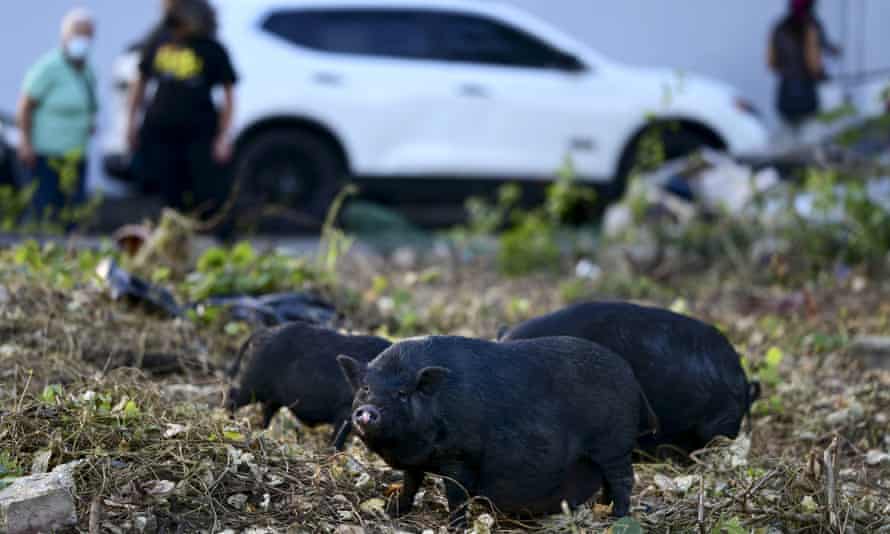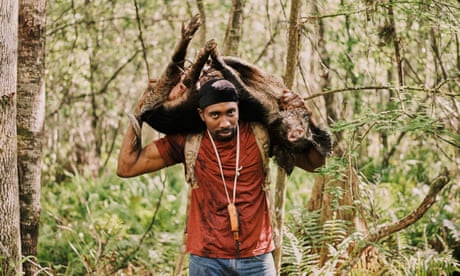The climate impact of wild pigs greater than a million cars

IMAGE: "WILD PIGS ARE JUST LIKE TRACTORS PLOUGHING THROUGH FIELDS, TURNING OVER SOIL TO FIND FOOD, " DR O'BRYAN SAID. view more
CREDIT: THE UNIVERSITY OF QUEENSLAND
By uprooting carbon trapped in soil, wild pigs are releasing around 4.9 million metric tonnes of carbon dioxide annually across the globe, the equivalent of 1.1 million cars.
An international team led by researchers from The University of Queensland and The University of Canterbury have used predictive population models, coupled with advanced mapping techniques to pinpoint the climate damage wild pigs are causing across five continents.
UQ's Dr Christopher O'Bryan said the globe's ever-expanding population of feral pigs could be a significant threat to the climate.
"Wild pigs are just like tractors ploughing through fields, turning over soil to find food," Dr O'Bryan said.
"When soils are disturbed from humans ploughing a field or, in this case, from wild animals uprooting, carbon is released into the atmosphere.
"Since soil contains nearly three times as much carbon than in the atmosphere, even a small fraction of carbon emitted from soil has the potential to accelerate climate change.
"Our models show a wide range of outcomes, but they indicate that wild pigs are most likely currently uprooting an area of around 36,000 to 124,000 square kilometres, in environments where they're not native.
"This is an enormous amount of land, and this not only affects soil health and carbon emissions, but it also threatens biodiversity and food security that are crucial for sustainable development."
Using existing models on wild pig numbers and locations, the team simulated 10,000 maps of potential global wild pig density.
They then modelled the amount of soil area disturbed from a long-term study of wild pig damage across a range of climatic conditions, vegetation types and elevations spanning lowland grasslands to sub-alpine woodlands.

CAPTION
"Our models show a wide range of outcomes, but they indicate that wild pigs are most likely currently uprooting an area of around 36,000 to 124,000 square kilometres, in environments where they're not native," Dr O'Bryan said.
CREDIT
The University of Queensland
The researchers then simulated the global carbon emissions from wild pig soil damage based on previous research in the Americas, Europe, and China.
University of Canterbury PhD candidate Nicholas Patton said the research would have ramifications for curbing the effects of climate change into the future.
"Invasive species are a human-caused problem, so we need to acknowledge and take responsibility for their environmental and ecological implications," Mr Patton said.
"If invasive pigs are allowed to expand into areas with abundant soil carbon, there may be an even greater risk of greenhouse gas emissions in the future.
"Because wild pigs are prolific and cause widespread damage, they're both costly and challenging to manage.
"Wild pig control will definitely require cooperation and collaboration across multiple jurisdictions, and our work is but one piece of the puzzle, helping managers better understand their impacts.
"It's clear that more work still needs to be done, but in the interim, we should continue to protect and monitor ecosystems and their soil which are susceptible to invasive species via loss of carbon."
###
The research has been published in Global Change Biology (DOI: 10.1111/gcb.15769).
World’s feral pigs produce as much CO2 as 1.1m cars each year, study finds
Researchers estimate the invasive species releases 4.9m metric tonnes of greenhouse gas annually by uprooting soil

Donna Lu
@donnadlu
Mon 19 Jul 2021
The climate impact of wild pigs around the world is equivalent to the greenhouse gas emissions of 1.1m cars annually, according to new research.
Modelling by an international team of researchers estimates that feral pigs release 4.9m metric tonnes of carbon dioxide each year globally by uprooting soil.
Researcher Dr Christopher O’Bryan of the University of Queensland said feral pigs were one of the most widespread vertebrate invasive species on the planet.

Florida's feral hogs: a pervasive pest – but a profitable one for some
“Pigs are native to Europe and parts of Asia, but they’ve been introduced to every continent except Antarctica,” he said.
“When we think of climate change, we tend to think of the classic fossil fuel problem. This is one of the additional threats to carbon, and to climate change potentially, that hasn’t really been explored in any global sense.”
Feral hogs uproot soil while searching for food, in a process O’Bryan likens to “mini tractors that are ploughing soil”. Doing so exposes microbes in the soil to oxygen. The microbes “reproduce at a rapid rate and then that can produce carbon emissions [in the form of] CO2.”
“Any form of land-use change can have an effect on carbon emissions from the soil,” O’Bryan said. “The same thing happens when you put a tractor through a field or you deforest land.”
The researchers estimate that wild pigs are uprooting an area upwards of 36,000 sq km (14,000 sq miles) in regions where they are not native.
Oceania had the largest area of land disturbed by wild pigs – roughly 22,000 sq km – followed by North America. The pigs in Oceania accounted for more than 60% of the animal’s estimated yearly emissions, emitting nearly 3m metric tonnes of CO2, equivalent to about 643,000 cars.
The findings of the study, published in the journal Global Change Biology, were drawn from three models. One model predicted wild pig density globally across 10,000 simulations, based on existing information about wild pig populations and locations.
A second model converted pig density into an area of disturbed land, and a third estimated the amount of CO2 emitted when soil is disturbed.
Nicholas Patton, a PhD student at the University of Canterbury, said there was some uncertainty in the modelling as a result of the variability of the carbon content in soils and the densities of wild pigs in different areas.
“Areas that are peat bogs or black soils … especially ones that have a lot of moisture, they’re a sink for carbon,” said Patton. “When pigs get in there and root around, they have a lot more potential for that carbon to be released [than from other soils].”
In addition to their climate impacts, the destructive impact of wild hogs has been well documented. O’Bryan said managing the animals was a challenge that would involve prioritising whichever of their impacts was deemed most significant.
“If all we care about is agriculture, then the cost and the benefits of managing pigs will be different than if all we cared about was carbon emissions, than if all we cared about was biodiversity.
“At the end of the day, feral pigs are a human problem. We’ve spread them around the world. This is another human-mediated climate impact.”
No comments:
Post a Comment